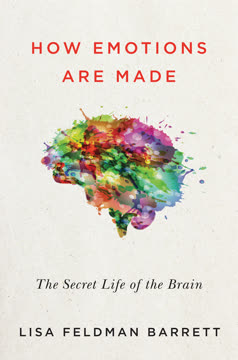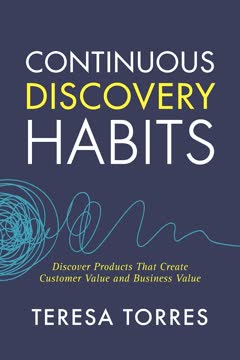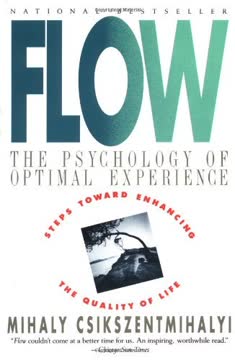Key Takeaways
1. Our perception shapes our reality: We operate on models, not direct experience
We as human beings do not operate directly on the world. Each of us creates a representation of the world in which we live — that is, we create a map or model which we use to generate our behavior.
Maps vs. territory. Our experience of the world is mediated through our internal representations or models. These models are created through three universal processes: generalization, deletion, and distortion. While these processes are essential for navigating the complexity of the world, they can also lead to limitations in our thinking and behavior.
Implications for therapy. When people come to therapy expressing pain or dissatisfaction, the limitations they experience are typically in their representation of the world, not in the world itself. By understanding and working with these internal models, therapists can help clients expand their perspectives and choices, leading to more fulfilling experiences and behaviors.
2. Language is our primary representational system for modeling the world
Human language is a way of representing the world.
Linguistic structure reflects thought. Language serves as both a representational system for our experiences and a means of communicating that representation. The structures and patterns in our language provide insight into how we organize and make sense of our experiences.
Therapeutic relevance. By examining a client's language patterns, therapists can gain valuable insights into the client's model of the world. This understanding allows therapists to identify areas where the client's model may be limiting their options or causing distress, and to intervene effectively to help the client expand their model and achieve positive change.
3. Transformational grammar provides insights into how we structure language
Transformational Grammar is an explicit model of the process of representing and of communicating that representation of the world.
Linguistic intuitions. Transformational grammar formalizes our intuitive understanding of language structure, including well-formedness, constituent structure, and logical-semantic relations. This formal model provides a framework for analyzing how we derive surface structures (what we say) from deep structures (the full linguistic representation).
Therapeutic application. By adapting concepts from transformational grammar, therapists can develop systematic ways to identify and challenge limiting patterns in a client's language and thought. This approach allows for a more precise and effective intervention strategy in therapy.
4. The Meta-model: A framework for understanding and changing linguistic patterns
The Meta-model we are presenting is not a new school of therapy, but rather a specific set of tools/techniques which are an explicit representation of what is already present to some degree in each form of therapy.
Explicit toolkit. The Meta-model provides therapists with a set of specific, learnable techniques for identifying and challenging limiting patterns in a client's language. These techniques are based on universal linguistic processes and can be integrated with various therapeutic approaches.
Key components:
- Identifying deletions in surface structures
- Recognizing and challenging generalizations
- Addressing semantic ill-formedness
- Recovering presuppositions
By applying these techniques, therapists can help clients recover deleted information, challenge limiting beliefs, and expand their models of the world.
5. Well-formedness in therapy: Guiding principles for effective communication
The overall effect of this Meta-model is in terms of well-formedness. As native speakers, we can consistently distinguish between groups of words which are well formed — i.e., sentences — and groups of words which are not well formed.
Therapeutic criteria. The Meta-model establishes criteria for well-formedness in therapy, extending beyond grammatical correctness to include:
- No unchallenged deletions in areas where the client experiences no choice
- No nominalizations (process words turned into nouns)
- Specified referential indices
- Fully specified verbs
- Explored presuppositions
- Semantic well-formedness
Guiding intervention. By applying these criteria, therapists can systematically identify areas where the client's language patterns may be limiting their experience or options. This provides a clear strategy for where and how to intervene in the therapeutic process.
6. Techniques for challenging and expanding client's models of the world
The point of mentioning this quite obvious fact is not to suggest that you, as a therapist, are not aware that people have feelings, but rather is the hope that you will recognize that, when you ask questions like, "How do you feel about that?" ... you are, in fact, asking your client for a fuller representation (than even Deep Structure) of your client's experience of the world.
Multifaceted approach. The Meta-model offers various techniques for challenging and expanding a client's model of the world:
- Recovering deleted information
- Challenging generalizations
- Addressing semantic ill-formedness
- Exploring presuppositions
- Shifting representational systems
- Using enactment and guided fantasy
- Implementing therapeutic double binds
Integration with existing skills. These techniques are designed to complement and enhance the therapist's existing skills and approaches, providing a systematic way to identify and address limiting patterns in the client's language and thought.
7. Integrating the Meta-model with various psychotherapy approaches
We would now like briefly to raise the question of the relationship between our Meta-model and family therapy. Simply put, the overall strategy of the Meta-model is to identify, challenge and expand the impoverished and limiting portions of the individual's model of the world.
Universal applicability. The Meta-model's principles can be applied across various therapeutic modalities, including individual, couple, and family therapy. It provides a common language and framework for understanding and addressing limiting patterns in communication and thought.
Enhanced effectiveness. By integrating the Meta-model with existing therapeutic approaches, therapists can:
- More precisely identify areas of intervention
- Systematically challenge limiting beliefs and patterns
- Help clients develop richer, more empowering models of the world
- Facilitate more effective communication within families and relationships
The Meta-model thus serves as a powerful tool for enhancing the effectiveness of various psychotherapy approaches, providing a systematic way to understand and transform the linguistic and cognitive patterns that underlie human experience and behavior.
Last updated:
FAQ
What's The Structure of Magic I about?
- Focus on Language and Therapy: The book explores how language can be a powerful tool in therapeutic practices, influencing perceptions and experiences.
- Modeling Human Experience: Richard Bandler and John Grinder introduce modeling, which involves creating representations of human experiences to facilitate understanding and change.
- Meta-Model Development: It presents a Meta-model derived from transformational grammar, providing a framework for therapists to enhance their effectiveness by understanding and manipulating language structures.
Why should I read The Structure of Magic I?
- Enhance Therapeutic Skills: The book offers practical tools and techniques for therapists to improve their effectiveness in helping clients.
- Learn Language Patterns: Readers gain insights into the structure of language and its influence on human behavior, applicable in various therapeutic contexts.
- Foundation for NLP: It lays the groundwork for Neuro-Linguistic Programming (NLP), offering a unique perspective on communication and change.
What are the key takeaways of The Structure of Magic I?
- Understanding Models: Individuals create models of the world based on their experiences, which can limit their perceptions and choices.
- Language as a Tool: Language is portrayed as a powerful tool in therapy, where understanding its structure can lead to more effective communication and change.
- Techniques for Recovery: The authors provide techniques for recovering missing pieces in a client's narrative, such as identifying deletions, distortions, and generalizations.
What is the Meta-model in The Structure of Magic I?
- Framework for Therapy: The Meta-model is a structured approach that helps therapists identify and challenge limitations in a client's language and thinking.
- Focus on Deletions: It emphasizes recognizing deletions in a client's speech, indicating missing information in their model of the world.
- Challenging Generalizations: The Meta-model involves questioning generalizations and assumptions, helping clients reconnect with their experiences and expand their choices.
How does The Structure of Magic I define "modeling"?
- Creating Representations: Modeling is the process of creating representations of experiences that guide behavior and perception.
- Active Process: It involves interpreting experiences and creating maps that influence actions and decisions.
- Therapeutic Application: In therapy, modeling allows therapists to understand clients' perspectives and facilitate change by altering these mental maps.
What are the three universals of human modeling discussed in The Structure of Magic I?
- Generalization: Applying specific experiences broadly, which can lead to limiting beliefs and behaviors.
- Deletion: Omitting certain details in a person's narrative, resulting in an incomplete understanding of their experiences.
- Distortion: Misinterpreting or misrepresenting experiences, leading to skewed perceptions and emotional responses.
How can therapists use the techniques from The Structure of Magic I?
- Identifying Language Patterns: Therapists can recognize specific language patterns indicating a client's underlying beliefs and experiences.
- Asking Targeted Questions: The book provides strategies for asking questions that help clients uncover missing information and clarify their thoughts.
- Facilitating Change: By applying Meta-model techniques, therapists guide clients toward a richer understanding of their experiences, enabling informed choices.
What is the significance of "deletion" in therapy according to The Structure of Magic I?
- Missing Information: Deletion highlights the absence of important details in a client's narrative, hindering their understanding of their situation.
- Recovery Techniques: Therapists are encouraged to ask specific questions to recover these missing pieces, facilitating a more complete representation of the client's experiences.
- Enhancing Choices: Addressing deletions helps clients expand their options and improve coping strategies.
What are some examples of "nominalizations" mentioned in The Structure of Magic I?
- Transforming Processes into Events: Nominalizations occur when verbs or processes are turned into nouns, obscuring the ongoing nature of experiences.
- Examples: Phrases like "my decision" or "my fear" are nominalizations that can be transformed back into their original process forms, such as "deciding" or "fearing."
- Therapeutic Implications: Recognizing and reversing nominalizations allows clients to reconnect with the dynamic aspects of their experiences, promoting change.
How does The Structure of Magic I address the concept of generalization?
- Definition of Generalization: It is described as applying specific experiences to broader categories, often leading to limiting beliefs.
- Challenging Generalizations: The authors emphasize identifying and challenging these generalizations in therapy to help clients expand their choices and experiences.
- Techniques for Exploration: The book provides techniques for therapists to address generalizations, such as asking for specific examples or alternative perspectives.
What is the significance of "mind-reading" in The Structure of Magic I?
- Definition of Mind-Reading: It refers to assuming one knows what others are thinking or feeling without direct communication, leading to misunderstandings.
- Therapeutic Implications: Mind-reading can impoverish a client's model by limiting their ability to express their own thoughts and feelings.
- Challenging Mind-Reading: Therapists are encouraged to ask clients how they know what others are thinking or feeling, helping them clarify assumptions and improve communication.
What are the best quotes from The Structure of Magic I and what do they mean?
- "We do not operate directly on the world.": Emphasizes that individuals create mental models of their experiences, influencing perceptions and actions.
- "The magic of these therapeutic wizards also has structure.": Highlights that effective therapy is not just intuitive but can be understood and learned through structured techniques.
- "Language is a map, not the territory.": Underscores the importance of language in shaping our understanding of experiences and the potential for change through linguistic manipulation.
Review Summary
The Structure of Magic I receives mostly positive reviews for its insights into language, psychology, and therapy techniques. Readers praise its exploration of how people construct reality through language and its practical applications for therapists. Many find it enlightening but challenging to read. Critics note its academic tone and question its scientific basis. The book is seen as foundational to Neuro-Linguistic Programming (NLP), though some express skepticism about NLP's later developments. Overall, it's considered valuable for therapists and those interested in understanding human behavior and communication.
Similar Books










Download PDF
Download EPUB
.epub digital book format is ideal for reading ebooks on phones, tablets, and e-readers.













